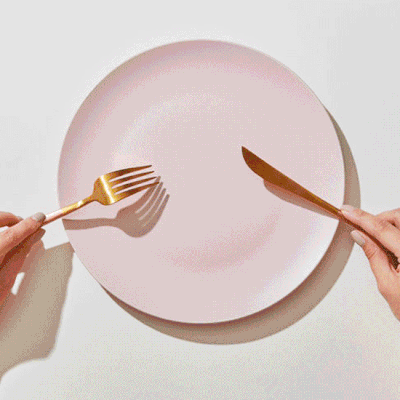
Eat Out Like A Nutritionist: Indian
A recent study found the average Indian takeaway can contain in excess of 2,000 calories, an adult’s entire daily calorie requirement. We sat down with Nutritional Therapist Rebecca Pilkington to discover her top tips for slashing the calories without scaling back on flavour.
SKIP THE STARTERS
From deep-fried samosas to onion bhajis, many Indian starters are high in saturated fat and are best avoided, Rebecca advises. “For a healthier alternative, I would go for a grilled starter, such as some tandoori prawns with a side salad. Also be wary of poppadums, which are often deep fried. A single poppadum contains around 100 calories, which isn’t too bad, but it’s all too easy to nibble on a pile of them.” Rebecca also advises caution against the chutneys traditionally served with poppadums: “These are often high in sugar, so opt for raita if you can. If you can’t resist, go for lime chutney, which tends to be lower in sugar than mango chutney. Tomato sambel, which contains just tomato and onions, is also a good choice.”
FOOD FACT: One onion bhaji contains 190 calories and 16g fat, and a small vegetable samosa 110 calories and 6g fat.
BE SAVVY ABOUT BREAD
An Indian meal may seem incomplete without a naan bread, but it can be a source of empty calories, says Rebecca. Plus, a recent study found the average Peshwari naan contains a whopping 748 calories and 168% of an adults’ total guideline daily amount of saturated fat. “The main ingredient of naan is flour, which can be very filling, leaving little room for your main. I would avoid naan and roti breads,” she says. If the naan is your favourite part of the takeaway, it’s worth checking with the restaurant, as some rotis are made from whole-wheat flour, which can provide a slower release of energy.
FOOD FACT: The average plain naan contains 455 calories and 12g fat.
CHOOSE TANDOORI ITEMS
Tandoori items are made in a traditional clay oven called a tandoor – this traditional method of cooking means dishes tend to be lean. “Tandoori dishes are one of the easiest ways to enjoy a healthier takeaway as the meat is usually grilled rather than fried, cutting back on calories and saturated fat. In general, the drier the dish is, the healthier it will be – for example, chicken tikka masala is loaded with cream, adding to both the calorie and fat content,” Rebecca says.
FOOD FACT: The average portion of chicken tikka masala contains over 1,000 calories while a tandoori dish contains around 400.
PICK YOUR PROTEIN
“I often advise my clients to choose vegetarian dishes when eating out, as the meat quality in certain international restaurants can be questionable. Unless you can guarantee the meat is organic or grass-fed, I would rather you ordered a vegetarian dish, or a prawn option,” Rebecca says. However, she also says to steer clear of paneer curries, which can be very high in saturated fat. “Instead, try ordering a dhal, which is naturally rich in fibre, protein and folate. Lentils also contain plenty of lean protein without the added saturated fat found in red meat,” she says.
FOOD FACT: A 300g serving of dhal provides around 300 calories and 10g fibre.
WATCH THE RICE
Studies show the average portion of Indian rice contains enough for two people, with the average portion of pilau rice containing almost 500 calories. “If you can’t live without rice with your curry, choose boiled rice over pilau varieties and share it between two of you. Even better, go for brown or wild rice, if it’s on the menu, for a slower release of energy.”
FOOD FACT: Pilau rice is fried in oil, so swap for boiled rice and save around 300 calories per portion.
ORDER ANOTHER SIDE
Rebecca says side dishes are a great way to boost the nutritional content of your takeaway. “Dhal is a great alternative to rice, aloo gobi is a delicious cauliflower and potato dish, while a spinach saag dish without added paneer is also packed with nutrients.”
FOOD FACT: Also keep an eye out for chana dhal, made with chickpeas, and makhana dhal, packed with kidney beans and black lentils.
THE BOTTOM LINE
“Try to think about the proportions of food on your plate, making sure it’s loaded with vegetables, such as spinach sides. People tend to over-order when having a takeaway, so try ordering half what you usually would and up the vegetable side dishes. For example, if it’s just two of you, share a main and order two or three lentil or vegetable sides. Opt for dhal over rice and avoid the naan bread too.”
For more information and nutritional advice visit RebeccaPilkington.com
DISCLAIMER: We endeavour to always credit the correct original source of every image we use. If you think a credit may be incorrect, please contact us at info@sheerluxe.com.